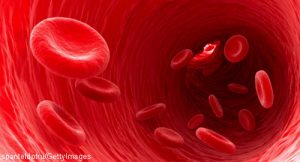 The growing literature suggests a person’s microbiome may affect the development of the autoantibodies that lead to systemic lupus erythematosus (SLE). A 2019 study published in Arthritis & Rheumatology reports a possible link between plasma microbial translocation, a person’s microbiome and autoantibody development in first-degree relatives of SLE patients.1
The growing literature suggests a person’s microbiome may affect the development of the autoantibodies that lead to systemic lupus erythematosus (SLE). A 2019 study published in Arthritis & Rheumatology reports a possible link between plasma microbial translocation, a person’s microbiome and autoantibody development in first-degree relatives of SLE patients.1
“We know that around 90% of lupus patients are women and that a number of factors are at play,” says corresponding author Gary S. Gilkeson, MD, distinguished university professor at the Medical University of South Carolina. Research into HIV shows that some of this heightened response may be related to the fact that the guts of women are more permeable than men’s. “The female immune response is stronger, more responsive and a bit more potent,” he says.
Gut Permeability
“Under normal conditions,” the study authors write, “the intestinal epithelial lining and factors secreted from it create a barrier separating the host from environmental antigens. However, in various disease states, this barrier may be compromised, leading to the translocation of microbial products into the systemic circulation, which may induce chronic inflammation and systemic tissue damage.” In short, microbial products get into the circulatory system, react with the immune system and trigger different responses. Dr. Gilkeson and colleagues wanted to know if microbial translocation makes a difference in the development of lupus.
“Translocation happens in everybody, and it happens more in women than men,” says Dr. Gilkeson. “We studied first-degree relatives, because SLE patients themselves are on medications and other interventions that may impact what gets through the gut and what doesn’t.”
Plasma samples were taken from two cohorts. One cohort consisted of 18 unrelated, healthy controls and 18 first-degree relatives of SLE patients. The second cohort comprised 19 healthy controls and 21 SLE patients. All subjects were assessed for autoantibody levels using autoantigen microarrays, lipopolysaccharide levels using the Limulus amebocyte assay and microbiome composition using microbial 16S ribosomal DNA (rDNA) sequencing.
All 36 participants in the first cohort were African American men or women. The 40 people enrolled in the second cohort were all women: 20 Caucasian (12 healthy controls and eight SLE patients) and 20 African American (seven unrelated, healthy controls and 13 SLE patients).
Plasma SLE-Related Antibodies Found
Researchers found that plasma levels of SLE-related autoantibodies were higher in SLE patients and their first-degree relatives than in controls. As expected, the autoantigen array results showed greater plasma levels of a large spectrum of autoantibodies in first-degree relatives than in unrelated, healthy controls, as well as in SLE patients when compared with healthy controls.
TLR Ligands Increased in Siblings
When researchers looked at lipopolysaccharide levels, a toll-like receptor (TLR) 4 agonist often used as a representative marker for translocation, they found parent or child first-degree relatives of SLE patients showed increased microbial translocation, compared with sibling first-degree relatives and unrelated, healthy controls. SLE patients also exhibited elevated plasma lipopolysaccharide levels compared with healthy controls.
A positive correlation was found between plasma lipopolysaccharide and levels of anti-dsDNA IgG when the results of unrelated, healthy controls and first-degree relatives of SLE patients were combined, as well as when healthy controls and SLE patients were grouped together. At the individual level, significant positive correlations existed between lipopolysaccharide levels in plasma and anti-dsDNA levels in first-degree relatives, but not SLE patients.
When the researchers looked at the circulating microbiome, some similarities and differences in the microbiome composition of the two cohorts were revealed. At the phylum level, all individuals in the unrelated healthy control and first-degree relative cohort had similar bacteria in the top five—based on relative abundance when compared with all individuals in the healthy control and SLE cohort. However, compared with unrelated healthy controls, first-degree relatives had decreased species diversity within each sample. In addition, diversity of the circulating microbiome of SLE patients tended to decrease in comparison with healthy controls, but not to a significant level.
“Overall, this study establishes previously unknown direct relationships between plasma microbial translocation and autoantibody levels in first-degree relatives of SLE patients,” conclude the authors. “In addition, it demonstrated a circulating microbiome profile for first-degree relatives of SLE patients that is reduced in diversity compared to unrelated healthy controls, while SLE patients receiving treatment have a circulating microbiome profile with a diversity similar to that in healthy controls. Several bacteria were also identified as distinctive to SLE patients and their first-degree relatives, and further studies are needed to explore their direct or indirect roles in autoantibody formation and SLE pathogenesis.”
No. 1 Finding
“The number one thing we found was that [women] do have more gut permeability issues than men, and the amount of permeability correlates with autoantibody production,” says Dr. Gilkeson. “It was also interesting that we found differences in the bacteria product that was penetrating the gut when some of these stimulated the immune system to produce autoantibodies. In addition, some of the bacteria products were coming from the vaginal flora instead of the [gastrointestinal] tract.”
In the future, Dr. Gilkeson notes that some researchers speculate they may be able to determine if one or more bacterial products circulating in plasma factor into gut permeability or SLE development, which could lead to the identification of biomarkers for lupus.
“I think the significance is the showing that gut translocation and leaky gut may be playing a role in the female preponderance in SLE,” he says. “Perhaps by screening plasma for bacterial products, we may be to find key causative organisms for this disease.”
‘Novel & Ambitious’ Study
Gregg J. Silverman, MD, a professor of medicine and pathology at the New York University School of Medicine, calls this report “very novel and ambitious.”
He says, “They applied very sophisticated technology to pose new questions about the possible role of the microbiome in SLE. Although each of the tests has become standard, the way they put them together and the selection of the subject population allowed them to pose novel hypotheses that have intriguing implications.”
First-degree relatives share many genetic factors with their SLE relatives. What is being increasingly appreciated is that other factors play a role beyond genetics and sharing DNA.
Shared Microbial Communities: Another Environmental Factor
“We also share environmental factors,” says Dr. Silverman. “There’s an increasing awareness that when we live together, we share environmental factors. Disease may track within a family, in part, because family members may also share the same diet and are colonized by similar microbiological communities.”
He notes that we are all wrapped in these microbiological communities, and we have more bacterial cells than human ones. The components of these communities are shared with the people we live with.
“This paper expands the concept of environmental exposures to more than cigarettes and the sun,” says Dr. Silverman. “It puts another ray of sunshine on understanding the environment within us and how it may influence susceptibility to diseases, such as lupus. We now have to think about dealing with this potential threat and how it may effect treatment in the future.”
Kurt Ullman is a freelance writer based in Indiana.
Reference
- Ogunrinde E, Zhou Z, Luo Z, et al. A link between plasma microbial translocation, microbiome and autoantibody development in first-degree relatives of systemic lupus erythematosus patients. Arthritis Rheumatol. 2019 Nov;71(11):1858–1868. Epub 2019 Sep 27.




